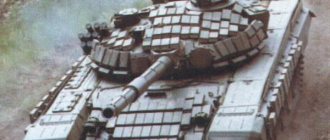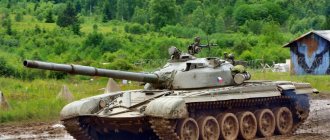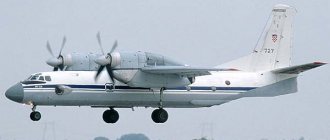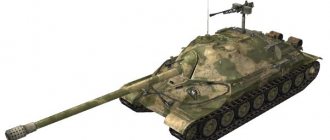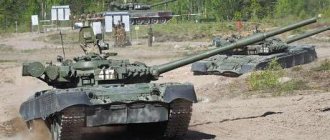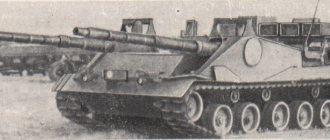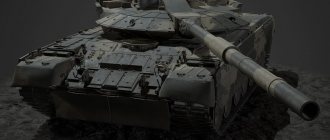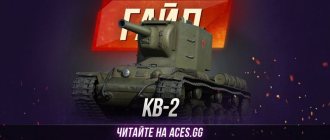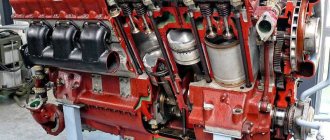Type of light tank
| Light tank Type 15 | |
| Type | Light tank |
| Place of origin | China |
| Service history | |
| In service | 2018-present [1] |
| Used | See Operators |
| Production history | |
| Designer | Norinco |
| Manufacturer | Norinco |
| Produced | c. 2015-present [1] |
| No. built | Secret. |
| Characteristics | |
| Weight | 33 tons (standard), 36 tons (with armor package) [1] |
| Length | 9.2 meters (30 ft) [1] |
| Width | 3.3 meters (11 ft) [1] |
| Height | 2.5 meters (8.2 ft) [1] |
| Crew | 3 [1] |
| Armor | Standard steel armor protection with optional enhanced composite armor and/or reactive armor package. [1] |
| Main weapons | 105mm rifled gun (38 cycles) with autoloader [1] |
| Secondary weapons | Remote controlled weapon station armed with a coaxial 12.7 mm machine gun and a QLZ-04 automatic grenade launcher |
| Engine | Diesel engine with electronic control and fully automatic transmission 1000 hp. (746 kW) [1] |
| Power/weight | 30.30 hp / ton |
| Suspense | Hydropneumatic suspension [1] |
| Operating range | 450 kilometers (280 miles) –800 kilometers (500 miles) [1] |
| Maximum speed | 70 kilometers per hour (43 mph) |
| vteTanks after the Cold War | |
| |
| In service |
|
| Experimental and prototypes |
|
Tank portal | |
Type 15 light tank
(Chinese: 15式轻型坦克; pinyin:
shíwǔ shì qīngxíng tǎnkè
), also known as
the ZTQ-15
, is a Chinese third generation light tank operated by the People's Liberation Army Ground Forces, as a replacement for the obsolete Type 62 light tank introduced in 1963 The Type 15 is designed to meet the requirement for a lighter, more mobile modern tank that can operate effectively in highlands/plateaus, forests and water-rich regions where the heavier Type 99 and Type 96 Main Battle Tanks may have difficulty traversing the track. [1]
Design[edit]
Weapons [edit]
The Type 15 light tank uses a new 105 mm rifled gun, which is superior to the 105 mm Type 94 gun found on the Type 88 and Type 59 tanks. The Type 15 can hold 38 rounds of 105 mm rounds and is capable of effectively penetrating the armor of most main battle tanks used in various South and Southwest Asian countries when firing armor-piercing rounds. [5] [6] It can also fire new advanced tungsten alloy fin-stabilized armor-piercing fin-stabilized (APFSDS) projectiles, capable of penetrating 500 mm (20 in) of armor steel at a range of 2,000 meters (1.2 mi). [7]
Features[edit]
The Type 15 light tank is equipped with chemical, biological, radiological and nuclear (CBRN) protection, a tail autoloader [8] mechanism with ammunition stored in the revolver vanity, an air conditioning system, command and control equipment, a commander's Russian panoramic sight, a gunner's thermal imaging sight , laser rangefinder, advanced ballistic computer, tactical command system and navigation system, which includes an inertial navigation system (INS) and satellite communications. [9][10] The vehicle is also equipped with oxygen generators to assist in high altitude operations. [eleven]
Mobility[edit]
Due to its lighter weight, the Type 15 tank is easier to transport through the air. Y-20 transport aircraft can only carry one Type 99 tank, but can carry up to two Type 15 tanks and provide a range of 7,800 kilometers. [12]
"Type 15" - a tank for the Himalayas
The People's Liberation Army of China has traditionally shown great interest in light tanks, necessary for operations in mountainous areas with a poorly developed road network. “Type 15” have begun to arrive to replace outdated vehicles.
, incorporating the advanced achievements of tank building.
In the post-war period, the class of main battle tanks (MBT) consigned heavy tanks to the dustbin of history, but a similar “trick” did not work with light ones. The development of this class of combat vehicles continues in a number of countries around the world. The People's Republic of China (PRC) was no exception, whose industry mastered production, and the army adopted the Type 15 light tank.
What are light tanks for?
There are two main areas in which light tanks have an undeniable advantage over MBTs. The first of these is amphibious operations, for which light amphibious tanks are quite appropriate. The second is actions in hard-to-reach areas without a developed road network. For such conditions, the tank does not have to be amphibious, but preferably lighter than an MBT to ensure maneuverability on soft soils and light-weight bridges. Both of these areas are important from the point of view of the military-political leadership of the PRC and the command of the People's Liberation Army of China (PLA). For both areas of application, the PLA had appropriate combat vehicles. The amphibious “type 63” was created on the basis of the Soviet amphibious tank PT-76. The 76 mm caliber gun did not suit the Chinese military, who considered it too weak, so the Type 63 received a more powerful 85 mm gun in a new turret. The weight of the tank increased, and in order to maintain the ability to swim, the Chinese had to remake its hull, increasing its volume.
Light tank "type 62" military-today.com
The functions of a combat vehicle for difficult-to-reach terrain (in Chinese conditions, these are mountains and hills occupying three-quarters of the country’s territory) were performed by the Type 62 light tank. It also has Soviet roots, although it has no direct production predecessor. In 1949, Uralvagonzavod specialists developed a lightweight version of the T-54 tank. The Soviet military was not interested in this project, and its technical documentation was transferred to the Chinese comrades. They finalized the project, replacing the 100 mm cannon with an 85 mm one, and put it into mass production, which continued until the end of the 80s.
By the beginning of the 21st century, both light tanks were already outdated and required replacement. The history of the creation of a new amphibious tank deserves a separate publication; in this material we will focus on the light “tank for the Himalayas”.
New Generation
In 2011, the first reports appeared online about the development of a new light tank in China. “Unofficial” photographs, despite their poor quality, made it possible to determine some features of the appearance of the new car - in particular, it became clear that it is not floating. Some experts expressed the opinion that the new vehicle is just a test bench designed to test the power plant, suspension and fire control system (FCS). When, among the photographs that appeared on the Internet, photographs of trains transporting new vehicles began to appear, it became clear that we were talking, at a minimum, about a pre-production batch intended for military testing.
The Type 15 tank is designed for operations in mountainous areas globaltimes.cn
By studying the available photographic materials, we can identify several variants of the light tank and trace its evolution during development. The earliest photographs show that the roof of the hull is flat. Later examples have a raised roof in the area of the engine and transmission compartment. This is likely due to the installation of a more powerful engine or a more efficient air purification system - or both. The support rollers, composition and location of control system elements, additional armor modules, and bulwarks were changed. In general, the desire to create a tank that meets the most modern requirements is clearly visible.
Neither the production date of the new light tank nor the production volume are precisely known. The designation “type 15” hints that it entered service in 2015. But to the PLA, deliveries of new combat vehicles begin, as a rule, several years behind the designation. It is believed that Type 15 tanks appeared in combat units about three years later - in 2022. The official “premiere” of the new light tank took place at the parade on October 1, 2022. It is also necessary to clarify one more detail - the designation “type 15” is used, rather, out of inertia. According to the Chinese official nomenclature, the tank is called ZTQ-15, where the first letter indicates the class - armored vehicle (Zhuangjia cheliang), the second - the subclass (tank - Tanke), and the third - the type of chassis (light tracked - Qingxing).
Type 15 tanks at the parade on October 1, 2022. The vehicles have a “desert” coloration and have an emblem on the towers - a stylized image of a leopard’s head globalsecurity.org
Design Features
The layout of the Type 15 light tank is classic (the control compartment is in front, the combat compartment is behind it, and the engine and transmission compartment is in the stern). The structure of the hull and turret is welded, made of steel plates. In the most vulnerable places, the tank's protection is reinforced with additional armor modules. The design of such modules can so far only be judged by analogy with other Chinese-made armored vehicles. Probably, each such module contains several relatively thin plates of steel of varying hardness (possibly with a ceramic coating). Of course, this increases the security of the combat vehicle, but there is one “but” - the Type 15 tank weighs about 30-33 tons, so its armor, even reinforced with additional modules, is unlikely to be able to withstand modern ATGMs and armor-piercing shells from main battle tank guns.
The driver's workplace is shifted to the left of the longitudinal axis of the car. Access to it is provided through a hatch that opens by turning to the left. The driver has three periscopes, and for driving at night there is a thermal imaging camera. The lower frontal armor plate of the hull is reinforced with rectangular-shaped additional armor modules.
The almost vertical side walls of the turret are additionally protected by anti-cumulative screens in the form of steel sheets, forming a kind of “pockets”, and the frontal projection is covered with wedge-shaped additional armor modules. The aft niche of a large volume is somewhat narrower than the tower itself, and its sides are also covered with anti-cumulative screens, but not solid ones, but lattice ones. Six pairs of smoke grenade launchers are installed on the sides of the niche.
The turret houses the tank commander (right) and gunner (left). Access to their workplaces is provided by two hatches in the roof (the lid of the left hatch tilts forward, and the right hatch back). Six periscope observation devices are mounted around the circumference of the commander's hatch. In front of the commander's hatch, a rotating head of a sighting device is installed on the plinth, and in front of the gunner's hatch there is a fixed sight. Both devices - commander and gunner - are combined day/night and have built-in laser rangefinders. The weapon control system allows the implementation of the “hunter-killer” mode, that is, the automatic transfer of a target from the commander to the gunner. A radar meter for the initial velocity of projectiles is installed above the gun barrel, and behind the turret is a mast with weather station sensors. Laser irradiation warning system sensors are located at the corners of the tower.
Top view of the tank. The “pockets” formed by anti-cumulative shields on the sides of the turret, the ejection panel above the automatic loader magazine, the location of hatches, sights and smoke grenade launchers are clearly visible armourinscale.wordpress.com
The tank is armed with a 105-mm rifled gun, which is an improved version of the British L7 gun, which was produced in China. The armor-piercing finned sabot projectile of this gun is capable of penetrating up to 500 mm of homogeneous armor, which is significantly less than the shells of 120 mm and 125 mm guns. In addition, the gun's ammunition includes cumulative and high-explosive fragmentation shells. It is reported that the tank is capable of using laser-guided ATGMs with a firing range of up to 5 km, developed in China based on the Russian 9M117 Bastion.
The gun's ammunition capacity is 38 shells. Some of them are located in the loading mechanism, the magazine of which is located in the aft niche of the turret. Shots are supplied to the magazine from outside the vehicle, through hatches in the rear wall of the turret niche. To ensure the safety of the commander and gunner in the event of detonation of the ammunition, an ejection panel is installed in the roof above the automatic loader magazine, allowing the shock wave to escape.
Tank "type 15" on a railway platform. The car carries the emblem we are already familiar with (the head of a leopard), but is painted in forest camouflage armourinscale.wordpress.com
The tank's additional armament is two machine guns: a 7.62 mm coaxial machine gun, and a 12.7 mm QJC-88. The latter is installed in a remotely controlled module on the roof of the tower. This module is especially important in view of the tank’s “mountain” role - it allows you to hit targets on slopes that are inaccessible to the gun and its coaxial machine gun due to the limited elevation angle.
Information about the tank’s power plant has not yet been officially published. One thing is certain: the tank is equipped with a diesel engine, but which one is unclear. Based on the similarity of the exhaust devices, some experts believe that the Type 15 has the same engine as the VT-2 tank (the export version of the Type 96 main battle tank) with a power of 800 hp. According to other sources, the tank is equipped with a more powerful, 1000-horsepower diesel engine.
Type 15 tank on a trailer. In order for the vehicle to “fit” into the width dimensions, the side screens were dismantled - this allows us to examine the design of the chassis armourinscale.wordpress.com
Photos of light tank prototypes suggest the presence of a hydropneumatic suspension that allows you to change the ground clearance. Perhaps a simpler torsion bar suspension is used on production cars. The chassis for one side consists of six small-diameter road wheels, three support rollers, drive and idler wheels.
Export version
In 2016, the presentation of the VT-5, an export version of the Type 15 light tank, promoted to foreign markets by NORINCO (North Industries Corporation) took place. This option has very noticeable differences from the base car. The driver's workplace is located in the center - this makes driving on narrow sections of roads, bridges and crossings easier. The design of the driver's hatch is very atypical - it slides without turning. The upper frontal plate of the hull on the “type 15” is installed almost horizontally, and on the VT-5 it consists of two parts - horizontal (the driver’s hatch is located on it) and inclined, connected to the lower frontal sheet.
The export tank VT-5 differs, in particular, in the location of the driver’s workplace cctv.cn
The VT-5 turret is less different from the “type 15” turret, but it has some specifics: the commander’s sighting device is located much lower, both hatches fold forward, and there are no laser warning system sensors. Instead of a 12.7 mm machine gun, a QLZ-87 automatic grenade launcher (manufactured in two calibers - 35 or 40 mm) can be mounted on a remotely controlled installation at the customer's request.
The VT-5 is equipped with an FX0012 diesel engine with a power of 1000 hp. and an automatic transmission interlocked with it. According to other sources, the tank is equipped with an eight-cylinder diesel engine “150 series”, which develops slightly less power (880 hp).
In April 2022, deliveries of VT-5 began to the first foreign customer - Bangladesh. This country, which is a traditional consumer of Chinese armored vehicles, ordered 44 light tanks - a quantity sufficient to equip one regiment. Taking into account the fact that the Bangladesh Army plans to rearm two more regiments, the number of acquired VT-5s could reach one and a half hundred. Pakistan is also showing interest in the VT-5, whose army could use light tanks adapted for combat in mountainous areas.
Prospects
The entry into service of the PLA of a new light tank will make it possible to replace the hopelessly outdated Type 62 tanks. The Type 15 tank is significantly superior to its predecessor in terms of armament, protection and mobility. Moreover, a modern fire control system provides the Type 15 with a potential advantage even in battle against main battle tanks of the previous generation that have not undergone modernization, for example, the Indian T-72. The relatively small weight has a positive effect on strategic mobility: for example, the Chinese Y-20 military transport aircraft can transport two Type 15 tanks in one flight, but only one Type 99 main battle tank.
Type 15 tanks during exercises in the Xinjiang Uygur Autonomous Region globaltimes.cn
Type 15 tanks are entering service with PLA brigades stationed in the mountainous regions of the country.
In particular, the participation of these vehicles in exercises held in the Xinjiang Uyghur Autonomous Region, at an altitude of 4,700 m above sea level, was noted. The organization of units armed with such tanks is not yet clear. On the one hand, traditional for the PLA was the “Soviet” scheme for organizing a tank battalion, which consisted of 31 tanks - three companies of 10 vehicles each, plus the battalion commander’s tank. On the other hand, recently there has been a transition to a mixed battalion structure (one tank company with 14 vehicles and three mechanized companies with infantry fighting vehicles or armored personnel carriers). One thing is certain: the appearance of new light tanks in the Himalayas will be a powerful argument for the Chinese in the confrontation with India. The Indian ground forces, which do not have such vehicles, in July 2022 received the sanction of the country's government to purchase light tanks intended for operations in the highlands. Tactical and technical characteristics of the VT-5 tank
| Crew, people | 3 |
| Combat weight, t | 33-36 |
| Body length, m | 7,5 |
| Length with gun, m | 9,2 |
| Width, m | 3,3 |
| Height, m | 2,5 |
| Armament | 105 mm cannon, 7.62 mm and 12.7 mm machine guns |
| Engine power, hp | 1000 |
| Maximum speed, km/h | 70 |
| Cruising range, km | 450 |
| Obstacles to be overcome: | |
| ditch width, m | 2,5 |
| wall height, m | 0,85 |
| ford depth, m | 1,1 |
Literature:
- Visinger L. Lehký tank ZTQ-15. ATM, 2022, No. 2
- Szulc M. Typ 15, czyli po co Chinam czołgi lekkie? Wojsko i Technika, 2022, No. 9
- armyrecognition.com
- globalsecurity.org
- nationalinterest.org
Options [edit]
Play media
Footage of the export version of the VT-5 tank, taken in 2018.
Type 15 / ZTQ-15 Military designation. VT-5 Another design similar to the ZTQ-15, which is made for export. There are noticeable design differences. The driver's hatch on the VT-5 is located in the center of the front of the hull, while the ZTQ-15's driver's hatch is located on the left. The upper front of the VT-5's body is noticeably curved, while the ZTQ-15's is straight. Modular additional armor sets are also noticeably different.
Equipment selection for Type 62
Installing additional modules allows you to smooth out the influence of the tank’s weaknesses or, conversely, highlight its strengths. Type 62 is a universal tank, therefore it has several sets of equipment.
- A universal option for active light and support for the breakthrough of medium tanks:
- gun rammer - increasing the rate of fire will not hinder even a leader at his level, so he will have no equal in this indicator;
- coated optics - increasing constant visibility by 39 meters. An indispensable module for mobile LT;
- vertical stabilizer - will reduce the dispersion of the gun while moving, which will allow for more accurate fire.
As an alternative, you can put improved ventilation in the 3rd slot, which will give a small increase to all the characteristics of the tank.
- If passive reconnaissance seems a more attractive option, then this tank may well allow the following gameplay:
- a camouflage net is an indispensable attribute for increasing the stealth of a vehicle;
- stereo tube - when stationary, it will give an increase of 97.5 meters, which will provide maximum visibility;
- improved ventilation - in this assembly it is needed primarily to increase visibility and invisibility.
Is it worth buying Type 62
This tank definitely deserves attention and is well suited for carrying out LBZ. There will be no battles with “tens”, and at the top of the list sometimes you can play against newcomers and gain damage. According to the review (the most important indicator for a LT), it is not inferior to the premium Tier 8 tank M41D, so why pay more?
Chinese light tanks have a good option at tier 6, the Type 64, which can really tank at its tier and is always available for purchase, but will require an additional crew member.
Reservation WZ-132-1
In terms of armor, the WZ-132-1 looks solid, considering that we are talking about a light tank. The frontal projection of the turret has 200 millimeters of armor located at good angles and bevels. This indicates that the tank's turret will ricochet and it will be very problematic to penetrate the vehicle head-on. The side sheets are reinforced with an anti-cumulative grille. Full booking values are below, nothing special to note.
Things are not going so smoothly with the hull armor. Here in the frontal projection there is only 50 millimeters, which, even taking into account the good angle of the armor plate, does not look like a serious obstacle to the guns of our classmates. Things are even worse on the sides, although screens are installed here.
Equipment selection for Type 62
If you set yourself the goal of farming silver, then the tank is quite capable of getting by with a standard set of consumables:
- small repair kit;
- small first aid kit;
- fire extinguisher (taking into account the high fire hazard of equipment, it is still safer to use an automatic one, and it will also provide 15% fire protection).
If the supply of credits allows, then improved equipment will increase not only survivability, but also combat effectiveness, and the third slot can be replaced with the national dish Improved Diet for +10 to the crew’s skills until the end of the battle.
Tactics for playing the WZ-132-1
How to play WZ-132-1? If you set your priorities correctly and take into account the strengths and weaknesses of your equipment, you can get maximum pleasure from playing a top-end Chinese machine.
It is necessary to remember that the tank has an impressive camouflage coefficient, so you can play from passive exposure: we occupy dense bushes, do not shoot and highlight the team of opponents carelessly sticking out. In addition, you can immediately rush towards the red team, since the good maximum speed allows you to do this. Playing with active light, we illuminate the enemy’s patrol and in the future do not allow them to relax.
The main thing is that we try not to linger in one place: we spin the carousel and look out for a careless enemy. The WZ-132-1 is quite capable of spinning any heavy vehicle in the game, distributing damage to unprotected sides. It is better to avoid direct confrontation with heavy tanks: it will not be possible to penetrate a steel monster head-on, and it is very imprudent to exchange a relatively small margin of safety.
In addition, you can play from the tower. This tactic will be very effective on urban maps, where you can hide the VLD and NLD behind cover, take ricochets with a gun mask and inflict damage on the enemy. In field conditions, such tactics may not work: the tank’s air defenses are simply terrible.
In general, we try not to lose sight of the mini-map and respond in a timely manner to changes in the situation in battle. Don't forget that we are dealing with a light tank that can quickly change flanks.
Review of the tier 10 light tank WZ-132-1
The WZ-132-1 in world of tanks is no exception to the general rule: the developers do not introduce absolutely ideal vehicles into the game so as not to cause a clear imbalance. Accordingly, each tank has strengths and weaknesses, knowing which, you can use the capabilities of the equipment with maximum efficiency.
The obvious advantages of the machine include the following parameters:
- Strong frontal armor of the turret.
- Shielded sides of the hull and turret.
- Mobility.
- High stealth factor.
- Decent DPM and one-time damage.
- Good armor penetration.
The following indicators are considered significant disadvantages:
- Strength.
- Weak dynamics.
- Accuracy.
- UVN.
Knowing these features, you can try to level out the shortcomings with modules and crew perks. The WZ-132-1 has average maneuverability, as well as a visibility of 410 meters, the gun is quite powerful, but with a large spread, so to speak, the game will be the same as now on the WZ-132. The screens won’t really help, but they will come in handy, the grille on the tower is an interesting solution, we’ll only find out how much it will save in a random match.
Crew training for Type 62
The choice of skills is a crucial moment, because they help make the gameplay more enjoyable and the game more effective. The Type 62 crew consists of four people, and the loader has a combined specialization with the radio operator. We recommend the following order for learning perks:
Order of learning and influence of skills
It’s better to rely on increasing the stealth of vehicles, so out of the general perks, we’ll be the first to upgrade Camouflage. We reset the skills for the commander and loader to select Sixth Sense - an indispensable skill for a scout and for increasing the strength of the Contactless Ammunition Module.
After studying 2.5 levels, it is recommended to reset again to select the Battle Brotherhood for all tankers, which only works with 100% mastery of all crew members.
The combination of Smooth Movement and Smooth Turret Rotation will improve the stabilization of the gun and increase the likelihood of hitting the enemy by reducing the scatter circle.
The combination of Eagle Eye + 7.8 meters and Radio Interception + 11.7 meters will help improve visibility.
The tank has a fast reload, so it makes sense to equip the gunner with a Sniper to increase the likelihood of critical damage against enemy modules. The off-road king will reduce drag on the ground, which will allow you to reach maximum speed a little faster.
Repair at level 5, because the Type 62 is practically devoid of armor, and like all light vehicles it has a small margin of safety, so 4 seconds of waiting for repairs under enemy fire can be fatal for it, so it is more effective to immediately use the repair kit.
As an alternative, you can completely abandon the repair in favor of Fire Extinguishing, in order to remove the fire extinguisher from consumables and replace it with a national dish for +10% to the crew’s skills.
